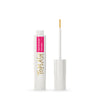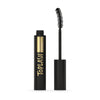Eyebrow Microblading: What You Need to Know Before Getting It

Eyebrow Microblading: What You Need to Know Before Getting It
 Eyebrow microblading has gained remarkable prominence as a groundbreaking technique, offering a semi-permanent solution for achieving impeccably shaped and defined eyebrows. While the popularity of this procedure continues to soar, it is crucial for individuals considering microblading to be well-informed about every aspect of the process, from the procedure itself to the aftercare and potential risks involved.
Eyebrow microblading has gained remarkable prominence as a groundbreaking technique, offering a semi-permanent solution for achieving impeccably shaped and defined eyebrows. While the popularity of this procedure continues to soar, it is crucial for individuals considering microblading to be well-informed about every aspect of the process, from the procedure itself to the aftercare and potential risks involved.
What is Microblading?
Microblading is a transformative and meticulous process that involves the use of a handheld microblade, composed of fine needles, to deposit pigment into the superficial layers of the skin. The goal is to create hair-like strokes that replicate the appearance of natural eyebrow hairs. Unlike traditional eyebrow tattooing, which employs a machine, microblading requires a high level of skill and artistry. The technique is designed to provide a more natural and realistic result, with each stroke contributing to the overall shape and fullness of the eyebrows.
The Procedure: What to Expect
The microblading procedure is a collaborative effort between the client and the skilled technician. It typically commences with a comprehensive consultation where your desired eyebrow shape, color, and overall look are discussed. This initial phase is crucial in ensuring that both you and the technician are aligned in terms of expectations. Following the consultation, a numbing cream is applied to the treated area to minimize any potential discomfort during the procedure. The microblading technician then uses the microblade to create precise, individual strokes, paying meticulous attention to the agreed-upon design. While the actual microblading process can take several hours, including the consultation and numbing time, the results are often well worth the investment of time and patience.

Pain and Discomfort: Does It Hurt?
The question of pain during microblading is a common concern for those considering the procedure. However, the general consensus is that the discomfort is minimal. Thanks to the application of a numbing cream prior to the treatment, clients typically report only mild sensations during the process. The numbing cream effectively dulls the nerve endings in the treated area, ensuring a more comfortable experience. Some clients may experience slight redness or swelling immediately after the procedure, but these effects are temporary and usually subside within a day or two.
Healing Process: Patience is Key
After the microblading procedure, the healing process is a critical phase for achieving optimal results. It's important to note that the initial color of the eyebrows may appear darker than expected, but this is a normal part of the healing process. Over the following weeks, the pigment will naturally fade slightly, revealing the final, desired result. Proper aftercare is paramount during this phase to ensure the pigment settles correctly, and the eyebrows heal in a way that enhances their appearance. Following the aftercare instructions provided by the technician is not only crucial for the healing process but also contributes to the long-term success of your microblading experience.
Factors to Consider Before Getting Microblading
Technician Qualifications: Choose Wisely. The selection of a qualified and experienced microblading technician is paramount to the success of the procedure. Research potential technicians thoroughly, checking for certifications, reviews, and before-and-after photos of their work. A skilled microblading technician possesses a deep understanding of facial symmetry, color theory, and the intricate details of eyebrow design. They will work with you during the consultation to create a personalized plan that aligns with your facial features and aesthetic preferences.
Allergic Reactions: Patch Testing. While allergic reactions to microblading pigments are rare, they are not impossible. To minimize the risk, many technicians conduct a patch test during the consultation phase. This involves applying a small amount of pigment to a discreet area, such as the inner forearm, and monitoring for any adverse reactions. This precautionary measure is particularly important for individuals with a history of skin sensitivities or allergies. If you have any concerns about potential reactions, discuss them openly with your technician during the consultation.
Expectations: Realistic vs. Ideal. Having realistic expectations is crucial when considering microblading. While the procedure can create beautiful, natural-looking eyebrows, it's important to recognize that individual results may vary. Factors such as skin type, aftercare, and lifestyle can influence the longevity and appearance of microbladed eyebrows. During the consultation, openly discuss your expectations with the technician, and be receptive to their professional guidance. Understanding the possibilities and limitations of microblading will help you make informed decisions and achieve results that align with your aesthetic goals.
Aftercare: Commitment is Key. The success of microblading is highly dependent on proper aftercare. Following the technician's instructions diligently ensures that the pigment settles correctly and results in well-defined, long-lasting eyebrows. Key aftercare practices include avoiding excessive moisture, sun exposure, and certain skincare products during the initial healing period. Committing to these aftercare guidelines not only aids in the healing process but also contributes to the overall success of the procedure.
Longevity and Maintenance: Touch-Ups and Follow-ups. Microblading offers a semi-permanent solution for eyebrow enhancement, and the longevity of the results varies from person to person. While some individuals may enjoy their microbladed eyebrows for up to two years, others may require more frequent touch-ups. The need for touch-ups depends on factors such as skin type, lifestyle, and the desired level of maintenance. Scheduling follow-up appointments as recommended by your technician is essential for maintaining the desired look and addressing any potential fading or unevenness that may occur over time.
Potential Risks and Complications
While microblading is generally considered a safe procedure with minimal risks, it's important to be aware of potential complications:
- Infection: Although rare, infection is a potential risk following microblading. Strict adherence to aftercare instructions, including keeping the treated area clean and avoiding exposure to contaminants, helps minimize the risk of infection. If you notice any signs of infection, such as increased redness, swelling, or discharge, it's crucial to seek prompt medical attention.
- Allergic Reactions: Allergic reactions to microblading pigments are uncommon but can occur. The patch testing conducted by technicians before the procedure is a proactive measure to identify potential allergies. If you have a history of allergic reactions, sensitivities, or skin conditions, discuss them thoroughly with your technician during the consultation phase.
- Uneven Results: Inexperienced technicians may create uneven or asymmetrical results. Researching and selecting a qualified professional is crucial to achieving balanced and natural-looking eyebrows. Before committing to microblading, thoroughly review the technician's portfolio, paying attention to before-and-after photos showcasing their skill in creating symmetrical and aesthetically pleasing eyebrows.
However, it's essential to approach the process with thorough research, realistic expectations, and a commitment to aftercare. By choosing a qualified technician, understanding the intricacies of the procedure, and considering individual factors, you can confidently step into the world of microblading, enhancing your natural beauty with semi-permanent, meticulously crafted eyebrows that align with your unique aesthetic.
Published: Mar 6, 2024




